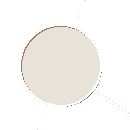
The Thrower's Page
![]() EVENTS
EVENTS
Shot
Discus
Hammer
Javelin
![]() STATS
STATS
Rankings
Age
Combos
Both hands
Other
![]() FACILITIES
FACILITIES
Layout
Sectors
Indoor
Outdoor
Insert
Racks
Overlapping
Repair
![]() INFORMATION
INFORMATION
NEW: Shoes
Paint your disc
Short wires
Physics
Pants
Training
Charting
Youth
High School
College
Wt. pentathlon
![]() OPINION
OPINION
Chip
Handle
Specs
Doping
Measuring
Plyometrics
Plyometrics are a major component of conditioning for throwers. While the main goal of weight training is to build strength and speed strength, the goal in plyometrics is neuromuscular training.
We are actually training the stretch reflex. The stretch reflex is an involuntary reaction to a stress load placed on the tendons. A group of nerves (the muscle spindle) senses that the tendons have suddenly been placed under a load. The muscle spindle sends a signal to the base of the spine, which relays a command to immediately and forcefully flex the extensor muscles.
This reaction is autonomic--meaning that it happens without involvement of the brain. This means it is quick. Because the respons is sent from the base of the spine, the reflex is initiated even before you are aware of it--faster than the signal travelling up the spinal cord to the brain.
When the physician taps your patellar and achilles tendon with the rubber hammer, he is testing your stretch reflex. Plyometric training will develop explosive athletic abilities. It will improve vertical jump and make the athlete more "springy."
Important considerations in plyometric training: Start easy and gradually build up volume and intensity. Only do hard plyos once or twice a week and get full recovery between plyo sessions.
Appropriate plyometrics for the thrower include:
Box jumps: Jump off one box and immeiately onto another box. Jump onto a short box, then to a higher box, then up vertical and land into a landing pit. Hurdle hops and one-legged bounds should be left to the jumpers. Throwers can do 1-legged hops up the stadium stairs--emphasize speed. Also can do squat jumps up the stadium stairs. Again, emphasize speed, and full recovery (no more than one set per minute). Instead of higher boxes, throwers should add weight (hold dumbbells). Standing broad jumps: single, double, triples, and more. 20-30-meter continuous broad jumps. Jumping lunges, vertical squat jumps Power skips: forward and backward Vertical jumps under the goalpost: touch the goalpost for several reps. Upper body plyos with the medicine ball: lying on ground, have a partner drop the ball above your chest, catch it at arm's length, decelerate to chest, then push throw vetical with great force. Standing chest catch with outstretched arms, bring to chest, and then immediate rebound throw. Hybrid weight-plyometric exercises: The DB jump squat: 8sets x 8 reps on the minute. Try to finish 8 reps in under 10 seconds. Go down to just above parallel. Only jump a few inches off the ground. The key is to jump fast, not high. Plyometric presses: using very light weight, let the bar drop during the first half of the descent, "catch" the bar in mid-descent, decelerate to chest/shoulder, and continuously push to full extension.That is really the key difference between plyos for jumpers vs. throwers. The throwers want to emphasize speed with maximum weight-- body weight or additional weight, whereas the jumpers want to emphasize height and distance.
Bounding: Power skips: emphasize vertical drive. Thre styles of arm movements with power skips: Running style: leg and alternate arm forward. Jumping style: both srms forward together with each leg. Thrower's style: arm circles with each leg. Backwards poewer skips Side shuffle with arm circles, emphasizing vertical height.
Training index | The Thrower's Page